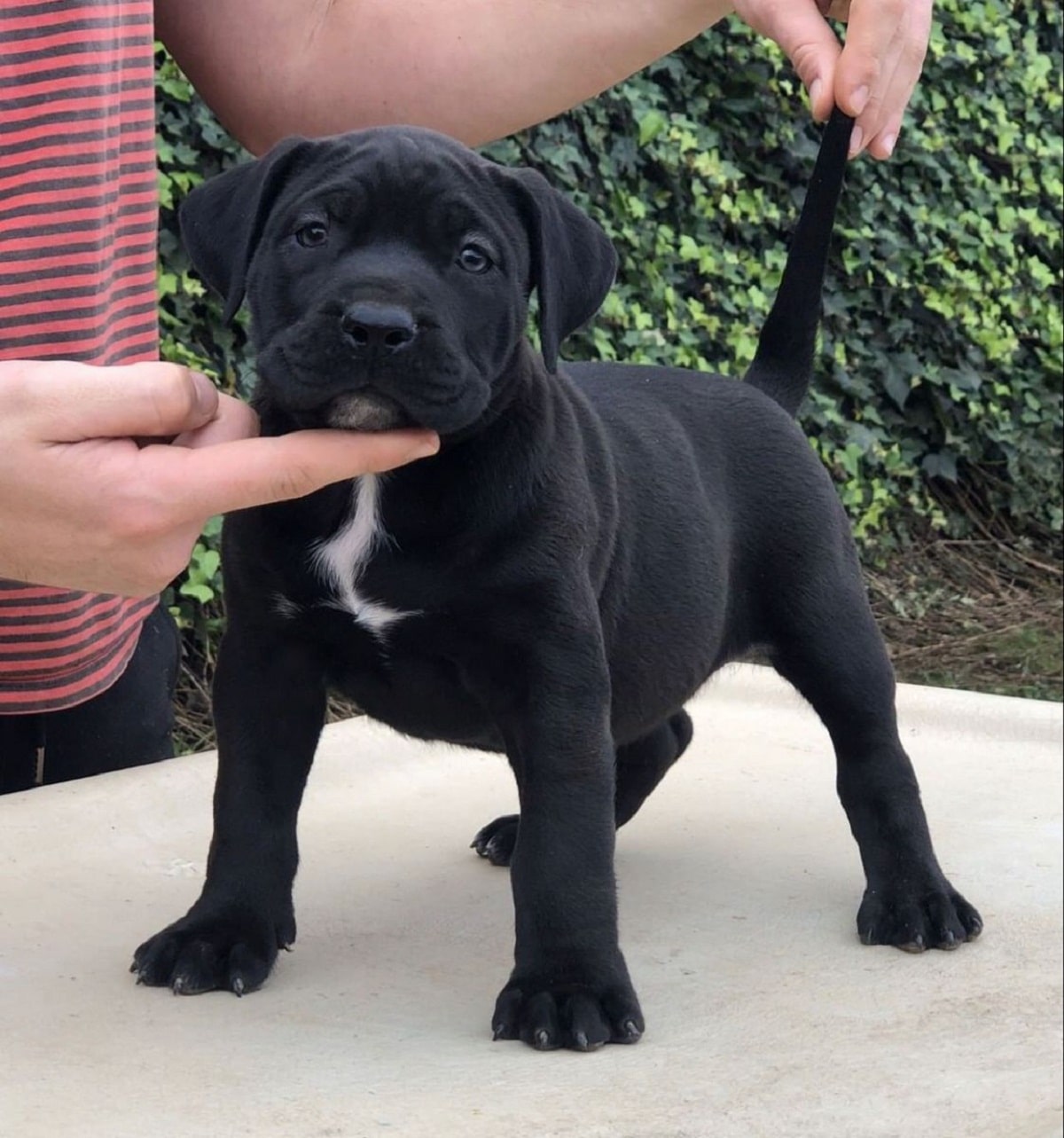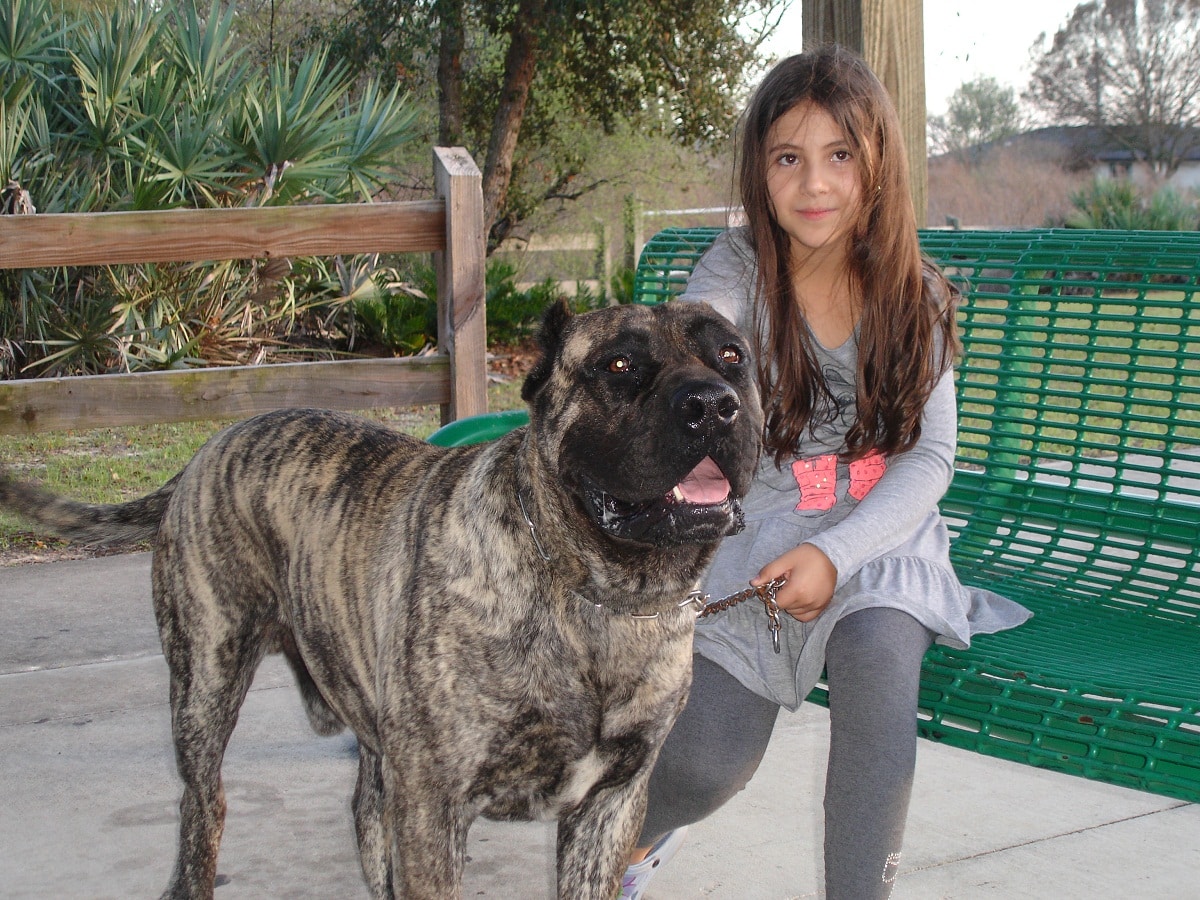
The presa canario or also known as dogo canario, is a breed of dog Spanish native of the Canary Islands. It is a robust, strong and large prey dog dedicated in its origins to the care of livestock and later introduced into our society as a companion animal. It is a watchdog and protector, very loyal to its owner.
Due to its strong and imposing appearance, it has traditionally earned a bad reputation as an aggressive and dangerous dog, but nothing is further from the truth. With proper education, it is one of the most docile, affectionate and loyal dogs that we can find with its owners. if you wonder What is the presa canario? and you want to know more about this endearing canine breed, stay with us to learn much more about it.
History of the presa canario: origin and consolidation of the breed

The first official references to this breed date from the beginning of the XNUMXth century. in the archipelagos of the Canary Islands. Apparently a nobleman of the time, the Cabildo de Tenerife, ordered the elimination of almost all bardine dogs of the islands since they were considerably damaging the cattle and with it deteriorating the business around the local cattle ranch. Butchers were only allowed to keep a pair of such dogs to assist them in the cow transportation and general cattle care, since those who were well trained exercised a positive work on these cattle animals.
At that time (XNUMXth century onwards) the Canary Islands were the focus of interest for many conquerors all over the world, so that ships arrived from various countries in which not only people traveled, but also dogs, which once on land , some remained on the islands. Many of these specimens were english mastiffs, Alans y spanish bulldogs that contributed to the development of new local breeds by different crosses.
The British, in addition to their dogs, brought with them the custom of celebrating dogs fights and from then on, dogs with “more aggressive characteristics” began to be selected to carry out this bloody occupation. They began to cross majoreros and bardinos with other fighting dogs such as bulldog, he mastiff and bull terrier. Thus a new race appeared, the canary mastiff or perro de presa canario, as we know it today.
Thus, the Canarian bulldogs had their peak as a result of dog fights, although they did not stop being used for field tasks and farm guards. After the ban on the use of these animals for fighting, they were about to disappear. However, in the 70s its local recovery began and the Canarian dam was recognized as indigenous heritage of the Canary Islands and the breed was officially registered in 2001. From then on, the dogo or presa canario has become the official symbol of the Canary Islands.
What is the presa canario? Physical characteristics according to the FCI

The dogo or presa canario (canis lupus familiaris) is classified by weight in the category of large dog breeds according to the FCI (International Cynological Federation). It is a robust dog with good proportions, with a strong and powerful appearance.
As in all animal species there is sexual dimorphism according to which we find physical and functional differences in each sex: female presa canarios weigh between 40 and 55 kg, and their height at the withers it is 56-62cm, while the male specimens weigh about 50-65 kg and their height at the withers is 60-66cm.
The recognized coat color in the official breed is dark brown brindle with black mask (refers to the color of the face and muzzle), sometimes with white markings at the base of the neck, chest and feet.
Does the black canary presa exist?
The truth is that no, the official record of the breed described by the FCI only recognizes the brindle coat for the Presa Canario. yes it's true that there are black and white variants of the race (which is actually cream, blond or sand) that are called "presa canario negro" or "presa canario blanco". Their features are practically identical but technically they do not belong to the breed as such. Apparently, the “presa canario negro” is in high demand by clients interested in acquiring a puppy with these characteristics, which is why it is marketed as "presa canario negro" (and the same for the white one).
The standard measurements and other characteristics of the presa canario are described by the FCI in the official technical sheet of the breed shown below.
| Denomination: Presa canario / Dogo canario |
| Origin: Canary islands spain |
| Talla: Big |
| Life expectancy: 10-12 years |
| Weight: Male: 50-65 kg Female: 40-55 kg |
| Hair type: Short |
| Character: watchful, alert, faithful |
| Cap: Brindle with black mask. Sometimes white markings on the base of the neck, chest and feet |
| withers height: Male: 59-66cm Female: 55-62cm |
| General ranking: Large dog breeds |
| Classification according to the FCI: Group 2: Pinscher and Schnauzer, Molossian, and Swiss Mountain and Cattle Dogs |
- El body of the presa canario has a length that exceeds its height at the withers. Is strong, with a broad and strong chest, of developed pectorals and well defined, so that the chest reaches the height of the elbow or at least is close.
- Su cabeza it is relatively big solid, with a shorter muzzle compared to the total volume of the skull, which is why it is "flatter" than other canine relatives with a "sharper" face such as the German shepherd or the Siberian husky, for example. The muzzle is broad at the base. and it decreases in thickness as it advances towards the nose. The face is dark, it is said that these dogs are of “black mask”, so that its entire face - including the snout and nose (nose) - up to the level of the eyes, is brown. The skin on the face is loose forming some wrinkles on the forehead when attentive or alert and a slight chin hangs from his neck.
- The eyes from the canary presa are round, they are not sunken or droopy. They are usually colored medium brown or dark brown, but never yellow or light according to the official characteristics described for this breed by the FCI.
- Their ears are quite separated from each other and falls to the sides naturally although sometimes they are cut for functional or aesthetic reasons.
- La tail is average length reaching almost to the hock (joint of the hind legs that joins the upper and lower part). When the presa canario is in action, its tail is raised like a saber, contributing to its balance and agility in its movements.
- La leather of the body It is flexible and somewhat loose. especially in the head and neck area. His hair is short and wiry-looking, dark brown brindle., although other shades of gray or blonde tabby and white markings on the chest are acceptable.
- La Life expectancy of the canary prey It is 10 to 11 years.
Temperament: Is the Presa Canario a dangerous dog?

The Spanish legislation established in the royal decree 287 / 2002 includes the presa canario in the list of potentially dangerous breeds. The strong and vigorous character of these dogs requires their owners to take out civil liability insurance and keep them on a leash and with a muzzle at all times on public roads, among other things.
Its nature as a prey dog is unquestionable and we must take responsibility with the aforementioned measures, but at no time should it induce any fear towards these dogs, since they with proper education and training they are adorable companion animals. In fact, their imposing presence and strength have traditionally meant that they have been considered aggressive and dangerous dogs, nothing could be further from the truth.
The presa canario has a calm and balanced character. Because of the role played for centuries in the care of livestock, he has an instinct for guard dog, so it will show up very protector y loyal "to his herd" (in this case the home that lives with its owners). His guardian nature will make him show distant with strangers but with its owner it is very loyal, obedient and docile.
The presa canario also shows an endearing affection and care towards children and able to live with other animals, such as kittens, as long as they have been used to since puppies. They are very protective of their owners, showing great courage in compromising situations (such as a robbery or similar).
It should be noted that this strong-willed dog is not for first-time owners. These animals require clear orders and discipline from a leader who knows how to set the rules well. If this is not the case, the dog will occupy the leader position.
Finally note that it is a dog with marching instinctTherefore, to keep it in proper physical shape and mental balance, it requires at least one long walk a day. They don't bark much but when they do its deep and hoarse barking can be intimidating.
Care that the Presa Canario needs

- Feeding: Due to its large size and energy, the Presa Canario will require a good daily caloric intake, recommended through good quality feed. For the same reason, hydration will be essential.
- Physical exercise: long walks a day due to its vigor to keep them in mental and physical balance. Except for this, they are not dogs that require a lot of physical activity. Due to their size, it is recommended to have them in large spaces with a garden or patio and coexistence in small-sized homes is discouraged.
- Hygiene: his short hair requires very little care, it will be enough to brush it once a week and bathe it occasionally. Regularly check eyes, ears and nails as they are areas susceptible to infection.
- Training: it is recommended professional training from puppies for proper socialization and family life.
- Common health and diseases: Presa Canarios are generally in very good health, but there are certain recurring pathologies associated with their large size, such as hip dysplasia or the stomach twist. These pathologies are more likely if there are obesity problems, so it is important to avoid it with food and physical exercise.